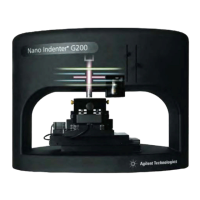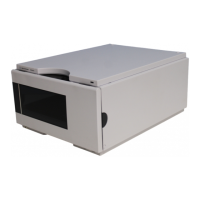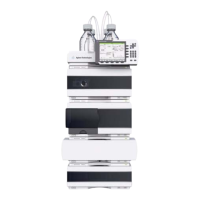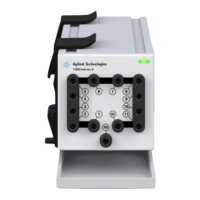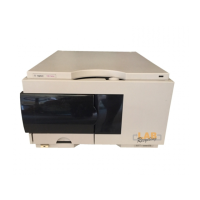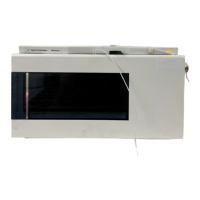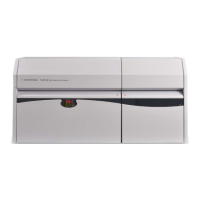208
Introduction to the Autosampler
Sampling Unit
Needle-Drive
The needle movement is driven by a stepper motor connected to the
spindle assembly by a toothed belt. The circular motion of the motor is
converted to linear motion by the drive nut on the spindle assembly. The
upper and lower needle positions are detected by reflection sensors on the
sampling unit flex board, while the needle-in-vial position is determined
by counting the motor steps from the upper needle-sensor position.
Analytical head / preparative head
The analytical head is driven by the stepper motor connected to the drive
shaft by a toothed belt. The drive nut on the spindle converts the circular
movement of the spindle to linear motion. The drive nut pushes the
sapphire plunger against the tension of the spring into the analytical head.
The base of the plunger sits on the large bearing of the drive nut, which
ensures the plunger is always centered. A ceramic ring guides the
movement of the plunger in the analytical head. The home position of the
plunger is sensed by an infra-red sensor on the sampling unit flex board,
while the sample volume is determined by counting the number of steps
from the home position. The backward movement of the plunger (driven by
the spring) draws sample from the vial.
Table 42 Analytical Head Technical Data
Standard
(100 µl
Micro (40 µl) Standard
(900 µl)
Preparative
(900 µl)
Number of steps 15000 60000 15000 15000
Volume resolution 7 nl/motor step 0.7 nl/motor step 60 nl/motor step 60 nl/motor step
Maximum stroke 100 µl 40 µl 900 µl 900 µl
Pressure limit 400 bars 400 bars 200 bars 400 bars
Plunger material Sapphire Sapphire Sapphire Sapphire

